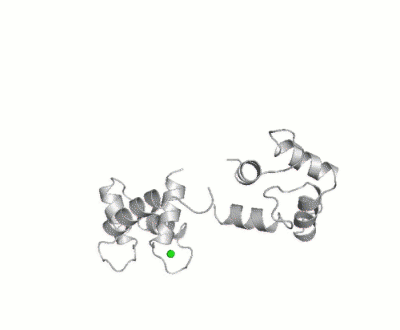Function
Calmodulin (CaM) – calcium modulated protein – regulates various protein targets. It is used by various proteins as calcium sensor and signal transducer by binding to their calcium binding domain (CBD). It undergoes conformational change upon binding Ca++ via its 4 EF hand motives and can undergo post-translational modification. of Human calmodulin (PDB code 1cll). [1] More details on apo-CaM Calcium-free Calmodulin and Calmodulin JMU.
Maximum Occurrence, a method for making rigorous numerical assessments about the maximum percent of time that a conformer of a flexible macromolecule can exist and still be compatible with the experimental data, was used to probe the conformational disorder of Calmodulin[2].

Figure 3: Orientation tensor representation for 400 conformational states of Calmodulin, color coded according to their MO values (from less than 5% in blue to more than 30% in red).To better explain their meaning, 10 randomly chosen models are shown as cartoons and then replaced by the three axes of their color-coded orientation tensors.
It was shown that the open (1cll) and closed (1prw) conformers can have MO of only 15% and 5% respectively.
Calmodulin in Motion
The buttons below allow you to explore morphs [3] between structures 1prw and 1cll.
The following morph is between 1prw and 1cll after superposition of residues 79-138. This shows the subtle conformational changes in that domain more clearly.
The following morph is between 1prw and 1cll after superposition of residues 8-78. This shows the subtle conformational changes in that domain more clearly.
3D Structures of Calmodulin
Calmodulin 3D structures

